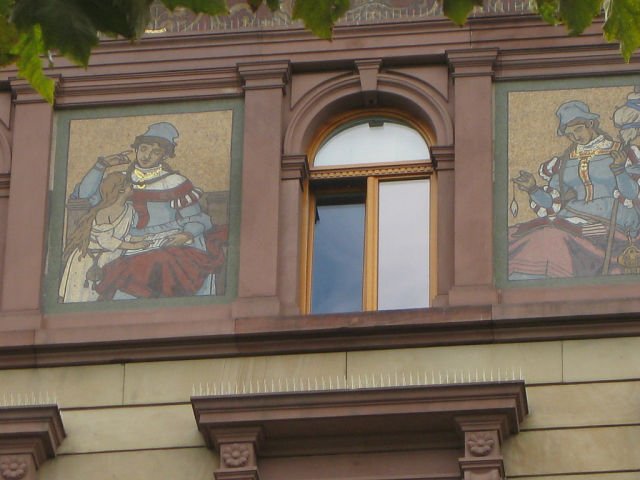#656. Historical Facade with Decorative Panels and Arched Window
The image showcases a fragment of a historical building facade, executed in a style characteristic of European architecture from the late 19th to early 20th century. The facade displays restrained elegance and decorative details that give the building cultural significance.
The base of the facade is made of light-colored stone or stucco, with distinctive horizontal rustication on the lower tier. The upper section is finished in brownish tones with a meticulously crafted cornice. The central element of the composition is an arched window with a wooden frame, enclosed by an architectural portal with classical proportions.
The most notable decorative elements are two fresco or mosaic panels positioned on either side of the central window. They depict scenes in a folkloric or historical style, which was typical of Art Nouveau and other artistic movements of that period. These decorative panels are organically integrated into architectural frames, creating a harmonious transition between the structural and artistic elements of the building.
Elements of greenery are also visible at the top of the frame, indicating possible vertical landscaping or decorative vegetation on the facade or balconies. This combination of architecture and natural elements emphasizes the aesthetic thoughtfulness of the entire ensemble.
